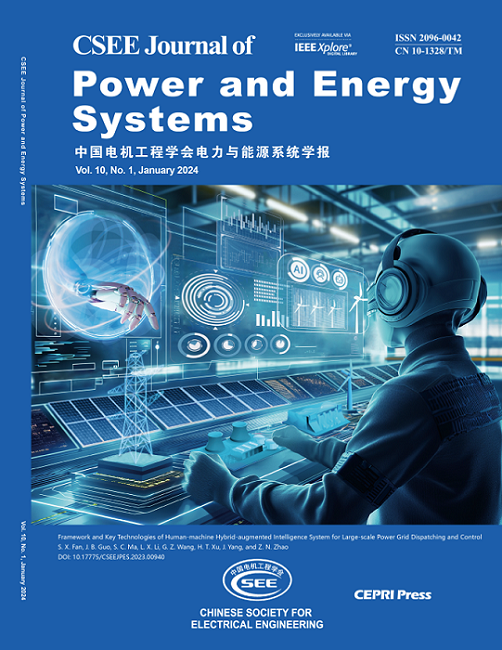考虑区域供热网络重构增强虚拟电厂灵活性
IF 5.9
2区 工程技术
Q2 ENERGY & FUELS
引用次数: 0
摘要
大规模的可再生能源渗透要求电力系统具有更高的灵活性。热电联产虚拟电厂通过对分布式电-热耦合系统资源的聚合,为提高电力系统的灵活性提供了一种经济有效的方法。在配电系统中,可以通过操作拉线和分段开关来优化拓扑结构。同样,热流分布可以通过阀门切换在区域供热系统(DHS)中重新分配,并为热电联产- vpp自调度提供显著的灵活性。为解决这一问题,提出了一种用于典型日前能源和备用电力市场交易的热电联产- vpp的聚合模型,该模型被描述为一个可调鲁棒优化(ARO)问题,以确保所有调度请求的可实现性。在DHS公式中引入能量流模型,使模型可解。由于ARO问题第二阶段存在二进制切换变量,不能直接采用经典的基于karush - kuhn - tucker算法,提出了嵌套的列约束生成求解策略。基于实际CHP-VPP的案例研究证明了该模型和算法的有效性。本文章由计算机程序翻译,如有差异,请以英文原文为准。
Enhancing Flexibility of Virtual Power Plants Considering Reconfiguration of District Heating Network
Large-scale renewable energy penetration desires higher flexibility in the power system. Combined heat and power virtual power plants (CUP-VPPs) provide an economic-effective method to improve the power system flexibility by aggregating the distributed resources of an electric-thermal coupling system. The topology can be optimally reconfigured in a power distribution system by operating tie and segment switches. Similarly, the heat flow profile can be redistributed in the district heating system (DHS) with valve switching and provide notable flexibility for CHP-VPPs self-scheduling. To address this issue, an aggregation model for the CHP-VPP is proposed to trade in typical day-ahead energy and reserve electricity markets, which is formulated as an adjustable robust optimization (ARO) problem to assure the realizability of all dispatch requests. The energy flow model is introduced in DHS formulation to make the model solvable. Due to the binary switching variables in the second stage of the proposed ARO problem, classical Karush-Kuhn-Tucker-based algorithms cannot be adopted directly and a nested column-and-constraint generation solution strategy is proposed. Case studies based on an actual CHP-VPP certify the validity of the proposed model and algorithm.
求助全文
通过发布文献求助,成功后即可免费获取论文全文。
去求助
来源期刊

CSEE Journal of Power and Energy Systems
Energy-Energy (all)
CiteScore
11.80
自引率
12.70%
发文量
389
审稿时长
26 weeks
期刊介绍:
The CSEE Journal of Power and Energy Systems (JPES) is an international bimonthly journal published by the Chinese Society for Electrical Engineering (CSEE) in collaboration with CEPRI (China Electric Power Research Institute) and IEEE (The Institute of Electrical and Electronics Engineers) Inc. Indexed by SCI, Scopus, INSPEC, CSAD (Chinese Science Abstracts Database), DOAJ, and ProQuest, it serves as a platform for reporting cutting-edge theories, methods, technologies, and applications shaping the development of power systems in energy transition. The journal offers authors an international platform to enhance the reach and impact of their contributions.
 求助内容:
求助内容: 应助结果提醒方式:
应助结果提醒方式:


